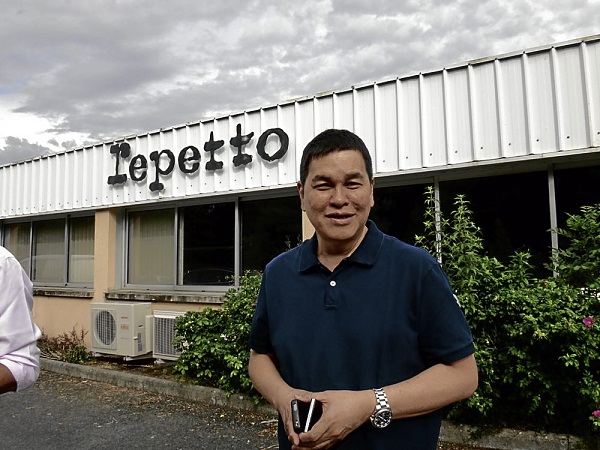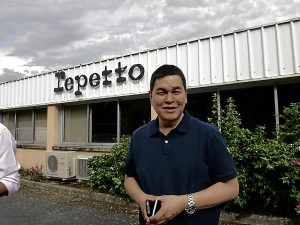
What goes up must come down.
In this case, we’re not talking about life or karma. We’re talking about heels.
If there’s a part of the woman’s body that’s been much abused in the 21st century—other than her pocket (a necessary extension of the woman’s body, by the way)—it must be her feet. They’re abused and punished not from too much walking or exertion, but from wearing stratospheric high heels. Seven inches, eight? Today’s shoes, like we said, have become the new millennium’s torture instruments.
Not only do women suffer the vanity of having to walk on them and be seen wearing them, they also do so for hours, sometimes the whole day.
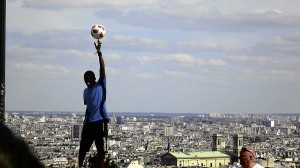
It was really only a matter of time before they suffered the consequences. As chiropractors and orthopedic doctors have been warning, your body will suffer, especially your back.
Just the other day, my stylish young staffer told me she was through with high heels, for now. I looked down at her feet, while we were having lunch, and true enough, she was in ballet flats. I hardly saw her in flats the past years. She said she was beginning to feel back pains, so she’d rather wear flats or low heels now.
“I get amazed when I see these girls doing the malls in high heels,” she said. “And even if they seem to be suffering from discomfort wearing them…”
I had to remind her that just a few years ago, I was amazed myself seeing her and our other editors in our glossy magazine then, wearing killer heels from morning until evening; they could actually work the whole day on them, negotiating stairs, standing for hours on end.
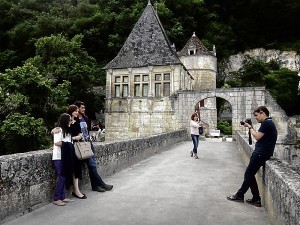
However, these past two years, I’ve seen more and more women wearing ballerina flats, here and abroad. Like our stylish editor, they must be feeling the back pains and realizing the drawback of wearing super-high heels.
Ultra comfort
Like it or not, this is the era of ballerina flats. This perhaps explains the recent phenomenal success of Repetto shoes worldwide—the French luxury brand that began as a maker of ballerina shoes in the ’40s and has evolved into must-have shoes for stylish women worldwide. They’re known for their ultra-comfort—no need to break in, as they say. As its export manager Barbara Legras said, “They’re your feet without the slippers.”
Indeed, Repetto is an idea whose time has come. Proof of that—the likes of Sarah Jessica Parker, Angelina Jolie, Reese Weetherspoon, Blake Lively are so into Repetto.
But Repetto today is not all ballet flats. It has wedgies, medium-height heels, loafers, boots—and bags.

Repetto has collaborated with Yohji Yamamoto, Comme de Garçons, Issey Miyake, Rodarte and Karl Lagerfeld to produce special collections. It now has six collections a year. There are five stand-alone stores in France and 15 retail corners in the department stores.
Repetto is in more than 50 countries, including in the Middle East (Saudi Arabia, United Arab Emirates), Tunisia, Kazakhstan, South Africa, Russia, Canada, US, Japan, Israel, Asia (Indonesia, HK, Singapore). It exports more than 50 percent of its turnover.
Not surprisingly, it didn’t take long for the Philippines’ foremost retailer Ben Chan—the man responsible for the first Filipino global brand (Bench, if you must ask)—to see Repetto’s potential market in the Philippines. Chan’s good friend, the style icon-turned-legislator Lucy Torres Gomez, told Chan about Repetto and why it might be a good idea to bring it to the Philippines.
Last April, Chan opened the first Repetto store in the Philippines at Greenbelt 3, carrying not only dance shoes but also street shoes, wedgies, dance bags, leather bags—the brand has really evolved.
Last month, Chan brought a retinue to Paris and to the Repetto factory in Saint-Médard-d’Excideuil in Dordogne, which is about 425 km south of Paris, or more than two hours by train from Paris. The Philippine group joined media and Repetto retailers from Asia in this factory visit.
The place isn’t only laid-back, it is idyllic.
Truffles and foie gras
The night before our factory visit, the group had an exquisite dinner (foie gras and duck confit) at Auberge de la Truffe, a quaint restaurant and inn in Sorges, a short drive from Dordogne and which has a population of only 10,000 (no postal code, or so we were told). That was when we learned that we’re in a region that’s known for truffles and foie gras.
Our first stop on the way to the Repetto factory or workshop was its training facility or school. There, recruits are trained in specific shoe-making skills for two to four months. People go through the training center before they can work in the Repetto factory. This phase of production was enough to convince us how this French manufacturing firm is different from a China assembly line. It shows what makes Repetto shoes a luxury brand.
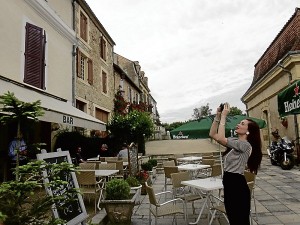
Until then, we didn’t know the measure of science and technique that went into the making of ballet flats—ultra-comfortable flats.
In the training center, the people are taught every phase of producing shoes, from handling fabrics and their color to stitching to finishing. Stitching is done by machines but human hands inspect and scrutinize the work.
At the Repetto factory, we saw that there are about 50 steps in the production—marked by various quality controls and manual finishing touches—to create shoes that are distinctive for their comfort, quality and aesthetics.
We saw how far it has come from producing ballet shoes. There were all kinds of styles and makes, including leather boots so soft you could fold them in your hands, or men’s shoes in brown patent leather. The designs of the shoes we saw in production ranged from the elegant and chic—like ballet flats in pink grosgrain ribbon strips—to the hip and whimsical, like the Stars and Stripes.
Aside from export manager Legras, guiding us on this tour were factory manager Paul Gilles and Repetto PR Floria Ricard.
Repetto is an interesting story. In 1947, Rose Repetto heeded the advice of her son to design ballet shoes. This son was Roland Petit, one of France’s major choreographers and dancers. In 2011, when Petit died, France’s Culture Minister Frederic Mitterand hailed him as “one of the major choreographers of the 20th century,” according to a BBC report.
Tiny workshop
BBC wrote that Petit revolutionized ballet for theatrical choreography and had produced more than 100 ballets.
For his son and his ballet groups, Mrs. Repetto turned out ballet shoes in a tiny workshop near the National Opera of Paris. On Repetto’s second decade, in 1956 to be exact, actress Brigitte Bardot asked Repetto to apply its technique producing ballet shoes, into ballet flats which she could wear—into street shoes, in short.
Repetto is known for its unique manufacturing technique—“le cousu retourne” (stitch and return), where the sole is sewn inside out before being turned out. This technique produces utmost comfort and flexibility.
In the 21st century, Repetto has become a luxury shoe brand, with bags. In 2005 it began work with the University of Technology of Compiegne to manufacture “soundproof ballet shoes.” Also in 2005 the factory began to produce made-to-measure ballet shoes. It produces ballet shoes for Bolshoi, San Francisco Ballet.
Through the century, Repetto has come to stand for grace and lightness. The market for it has apparently grown exponentially. From a mere 50 pairs a day in 2003, the factory now produces about 7,000 a day or more than 300,000 pairs a year.
The Repetto family has sold the brand to Jean-Marc Gaucher, who’s now the CEO.
Repetto is the latest in Ben Chan’s portfolio of foreign brands.
“We’re building our portfolio,” said Chan. Among the foreign brands Chan has acquired are Charles & Keith, Aldo, Call It Spring, and Pedro, all of them doing well.
Since he built Bench in the ’70s, Chan has always been known for his Midas touch in retail. To hear him explain it, Chan has always looked up to Japanese brands, such as Yamamoto, Matsuda, Comme des Garçons, since those decades. This love has inspired him in the marketing of Bench—which, in a way, became the benchmark of retail marketing in the Philippines.
Chan believes that the tipping point, where the success of Bench was concerned, was when it signed on Richard Gomez to shoot that famous ad showing this hunk of an actor rowing. That’s become an iconic ad.
“We didn’t think we could afford him, but Richard agreed,” Chan recalled the memorable years. “And Richard has so loved the brand through the years.”
Richard and Lucy, with their 11-year-old Juliana—an 11-year-old with mature intelligence and even more mature charm—joined the Repetto trip.
No doubt, Repetto is this year’s retail success story in Manila. With Repetto, it seems Chan’s Midas touch has extended to—our high heel-weary feet.

